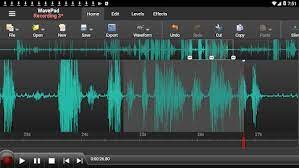
Introduction: Sound editing is a crucial aspect of the filmmaking process that often goes unnoticed by audiences. However, its significance cannot be overstated, as it plays a pivotal role in shaping the emotional impact and immersive experience of a film, television show, video game, or any other form of media. In this article, we will delve into the world of sound editing, exploring its techniques, tools, and artistic considerations.
Understanding Sound Editing: Sound editing involves manipulating audio elements to enhance storytelling, evoke emotions, and create a cohesive auditory experience. It encompasses various tasks, including dialogue editing, sound effects design, Foley recording, music editing, and mixing.
Dialogue Editing: Dialogue editing focuses on ensuring the clarity and consistency of spoken words in a production. This involves removing background noise, adjusting volume levels, and synchronizing dialogue with on-screen action. Sound editors often utilize specialized software tools such as Avid Pro Tools or Adobe Audition to accomplish these tasks efficiently.
Sound Effects Design: Sound effects are essential for adding depth, realism, and atmosphere to a scene. Sound editors meticulously select and create sounds that complement the visual elements, whether it’s the roar of a dinosaur in a Jurassic adventure or the subtle rustling of leaves in a quiet forest scene. They may source sound effects from libraries or record custom sounds to achieve the desired effect.
Foley Recording: Foley is the art of recording custom sounds to synchronize with specific on-screen actions, such as footsteps, clothing rustles, or object interactions. Foley artists use props and various surfaces to recreate these sounds in a controlled studio environment. Sound editors then integrate these recordings into the final mix, enhancing the overall audio quality and realism of the production.
Music Editing: Music plays a crucial role in setting the tone, mood, and pacing of a film or video project. Sound editors work closely with composers or music supervisors to select appropriate tracks or compose original scores. They also ensure seamless transitions between music cues and adjust the timing to match the visual rhythm of the scenes.
Mixing: Mixing is the process of blending multiple audio elements, including dialogue, music, and sound effects, into a cohesive soundtrack. Sound editors use specialized software to adjust volume levels, balance frequencies, and create spatial effects such as panning and reverb. The goal is to achieve a dynamic and immersive audio experience that enhances the storytelling without overpowering the visuals.
Tools of the Trade: Sound editors rely on a variety of tools and technologies to accomplish their tasks effectively. Here are some essential tools commonly used in the industry:
- Digital Audio Workstations (DAWs): Software platforms such as Pro Tools, Logic Pro, and Reaper serve as the primary workspace for sound editing, providing features for recording, editing, mixing, and mastering audio.
- Plugins and Effects: Plugins are software components that add additional functionality to DAWs, such as equalizers, compressors, reverbs, and virtual instruments. Sound editors use these plugins to manipulate audio signals and achieve desired sonic characteristics.
- Field Recording Equipment: Sound editors often venture into the field to capture custom sound effects or ambient recordings. High-quality microphones, portable recorders, and accessories such as windshields and boom poles are essential for capturing clean and detailed audio.
- Foley Props and Surfaces: Foley artists utilize a variety of props and surfaces to create custom sound effects in a studio setting. These may include shoes for footsteps, clothing for fabric rustles, and various objects for interactions.

Artistic Considerations: Beyond technical proficiency, sound editing requires a keen artistic sensibility and attention to detail. Sound editors must understand the emotional impact of sound and how it can enhance the narrative and character development. They collaborate closely with directors, producers, and other creatives to achieve the desired auditory vision for the project.
Furthermore, sound editing involves making creative decisions that serve the story and engage the audience. Whether it’s amplifying subtle nuances in a performance or crafting immersive soundscapes for fantastical worlds, sound editors play a vital role in shaping the overall aesthetic and impact of a production.
Conclusion: Sound editing is a multifaceted discipline that combines technical expertise with artistic creativity. From shaping dialogue clarity to crafting immersive soundscapes, sound editors are instrumental in enhancing the audiovisual experience of films, television shows, video games, and other forms of media. By mastering the techniques and tools of sound editing, storytellers can elevate their projects to new heights of auditory excellence.
